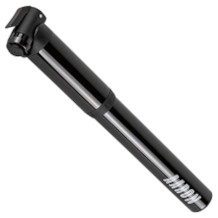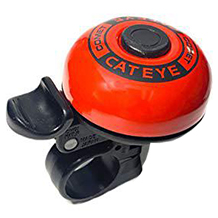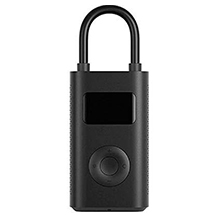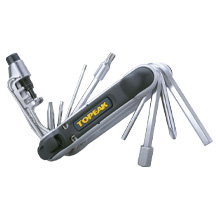Cycling backpack purchasing advice: how to choose the right product
- What you need to know
- Unlike traditional backpacks, bike backpacks sit firmly on your back even when riding on rough surfaces.
- While bike backpacks for multi-day bike trips should be primarily spacious and comfortable, road bike backpacks are reduced to the essentials.
- Lightweight racing backpacks usually have a small capacity and often do without comfort features such as padding.
- The maximum load of a bicycle backpack depends on its shape on the one hand, and on the carrying system on the other.
- Backpacks with height-adjustable back system can be individually adjusted to the body dimensions.
A backpack for cyclists
Backpacks come in all sizes, shapes and for every conceivable use – be it for leisure, school, work, hiking or travel. The practical thing about them is that, thanks to the shoulder straps, they sit comfortably on your back, leaving your hands free for other things, such as riding your bike.
There are also special models for cyclists. In everyday life, however, this division is less strict. Shopping can be stowed in a school backpack and sports gear fits just as well in a hiking backpack. In principle, cycling is possible with any variant, but not necessarily comfortable. Because cyclists sit on their bikes in a stooped position and pedal, conventional backpacks slip on their backs. They also often have wide hip belts.
In contrast, special bicycle backpacks are designed to fit tightly even when riding on rough surfaces. To keep them in position, the chest strap is essential. In addition, bicycle backpacks are more body-shaped and distribute the weight of the contents evenly. In this way, they significantly reduce the chance of back pain. Since the waist belt on bike backpacks is narrower than conventional backpacks, it does not press against the body when riding in a crouched position.
This is what matters when buying
The ideal bike backpack is large enough to store all utensils in it, can be worn comfortably for long periods of time and is designed to fit the individual area of use.
Application area
Whether you ride your city bike to work or a mountain bike (MTB) over rough and mountainous terrain is very important when choosing the right bike backpack. Backpacks for MTB riders, for example, are equipped with back protectors that protect the spine in case of a fall. They also have practical features such as a tool compartment or a holder for the helmet, but do without unnecessary weight. Large MTB backpacks are also suitable for multi-day trips.
For racers, on the other hand, back protectors are just extra weight. They value completing a route as quickly as possible, so suitable backpacks should not interfere with the riders. So-called lightweight backpacks, which dispense with all non-essential functions, are ideal. Most models weigh less than 600 grams.
City backpacks are designed for everyday city life, which is noticeable, for example, in the division of compartments. They often have a padded notebook compartment and space for small items like keys, case or charging cable. In addition, some models have reflective elements on the outside, which help to make riders more visible in traffic.
Meanwhile, there are even bike backpacks for e-bikes, which are equipped with a special compartment to store the spare battery or the bulky charging cable. With some products, the bicycle display can also be accommodated in a separate area. In favor of a body-friendly weight distribution, the heavy objects are ideally located close to the back.
Since many cyclists use their bicycles for more than a single purpose, in practice this breakdown is only a guideline. You can use a MTB backpack just as in the city. Some manufacturers, such as Vaude, also offer so-called multifunctional backpacks that are suitable for both the city and for bike tours. For example, they can have both reflectors for road traffic and tool compartment for touring.
Fan layout
The specific number and shape of internal compartments depends on the field of application, but clever placement is important for all variants. With a successful division of compartments, all the necessary items can be easily stored, even if it is a small backpack. On the other hand, if a particular compartment, such as the tool compartment, is too small for the utensils, it cannot serve its purpose and the items must be stored elsewhere. However, this means that the tool takes away space for other items, often reducing the overall storage space.
In addition, it has a negative effect on weight distribution if heavy items have to be stored in a front compartment. Unfavorable weight distribution causes back pain during longer uses. Therefore, when choosing a backpack, make sure that the compartments are large enough on the one hand, and on the other hand, those for heavy things are placed close to the back.
Typical of mountain bike backpacks are fixed places for air pump, tools, water bottle and bladder. Some bike backpacks are even equipped with a removable compartments. For example, if you need a place for the notebook, you can add the appropriate compartment. The helmet is usually attached either to a bracket or in a mesh pocket on the outside. To quickly access important small items or snacks, bike backpacks are often equipped with side mesh pockets.
Capacity and load range
Common bicycle backpacks have a capacity between 5 and 30 liters. But that doesn’t mean you can load a 20-liter backpack with 25 kilograms. In fact, the volume provides information about the maximum size of the backpack. Measurements are considered less accurate because the backpack is not exactly cuboid in shape, either unloaded or loaded.
The maximum load, i.e. how much weight you can carry in the bike backpack, depends on the one hand on the cut of the backpack and on the other hand on the carrying system. In addition to the dimensions and volume, many manufacturers also specify the load range to help customers decide what to buy.
How much space you need depends on how you use your bike. For example, those who primarily bike to work often need less space than those who like to take longer bike rides in their free time. On tours, after all, it makes sense to stow not only food and drinks, but also an air pump and tools in case of a flat tire. A rain jacket can’t hurt either. On the way to the office, it is sometimes enough if the backpack only has space for valuables, food and drink. In an emergency, you’ll get help faster in the city than, say, on a remote trail. However, if you’re a minimalist, you can manage a day trip with a backpack that has a capacity of 15 liters at most. A capacity of less than 15 liters is common for racing backpacks. For a bike tour of several days, up to 30 liters are useful.
Fit and carrying system
Just like hiking backpacks, there are not only unisex bicycle backpacks, but also those for men and those for women. This breakdown is based on the average physique: Women often have a shorter back than men, as well as a wider and shallower pelvis. Therefore, corresponding backpacks are often smaller and the waist straps are slightly wider than those of men’s backpacks. In addition, the chest strap is designed so that it does not chafe under the armpits or press on the chest area. Ideally, the chest strap should be adjustable in both width and height, as few individuals have standard body measurements.
In addition, there are high-quality bicycle backpacks with length-adjustable back system, where the backpack length can be adjusted to your own body size. Such systems are ideal not only for unisex backpacks to compensate for anatomical differences between genders, but also practical for those who do not have standard body measurements.
The most important thing about any carrying system is that it allows users to carry the fully packed backpack for long distances without pain or fatigue. Typically, the shoulder straps sit further forward than in hiking backpacks.
The more comfortable, the better
Large bike backpacks often feature thick padding on the back and straps to make them extra comfortable to carry. The cushions are often covered with mesh and attached to sturdy back plates. This solid layer prevents objects in the backpack from pressing against the back. A good carrying system also ensures pleasant air circulation and reduces sweating.
The more efficient, the better
Small and lightweight racing backpacks with a capacity of less than 15 liters usually do without back padding and have thin, airy straps. They are ergonomically cut and hug the back to reduce drag while racing. Lacking comfort features like padding, longer distances with a full backpack can be uncomfortable.
The agony of choice
Mid-sized backpacks can sit close to the body like racing backpacks or padded and far from the body like large cycling backpacks. Which variant you choose depends on your preference. The product must only fit tightly to the body and not slip when cycling.
Material and processing
Riding your bike on uneven terrain or off-road can put a lot of strain on your backpack: Accidental contact with bushes, branches or rocks can usually not be completely avoided. Likewise, a fall may occur. A robust outer material is therefore essential so that the backpack does not suffer any damage. Ideally, it should be waterproof, but this is rarely the case. Many products are at least water repellent – that is, the raindrops bead off the surface. Although they survive light rain well, the inside does not stay dry during a rain shower.
Nylon and polyester fabrics are often used as the outer material, which are characterized by their robustness. Alternatively, a tarpaulin material is used, which is often made of PVC. Meanwhile, manufacturers like Vaude also use PVC-free material. Depending on the product, the surface is coated either on one side or on both sides with a water- and dirt-repellent coating made of materials such as polyurethane. But to ensure that the backpack actually does not let water inside, the seams and closures must also be tight. So-called roll-top backpacks, where the closure is rolled up, prevent water from getting to potentially leaky spots in the first place.
Equipment
There are bike backpacks for outdoor use, which are equipped with a hydration system. Also known as hydration backpacks, they allow cyclists to quench their thirst while riding. They drink from a tube connected to a hydration bladder inside the backpack. The hose is fed out through an opening near the shoulder strap so that cyclists can reach it effortlessly. However, hydration bladders are usually not included, but are offered separately by the manufacturer.
If you ride your bike in traffic, you are already clearly visible thanks to lights and reflectors, but especially when riding at night, additional reflectors are not a bad idea. Similar to good school backpacks, some bike backpacks feature reflective elements to increase safety on the road. The yarn also lights up on some models as soon as the light from the car headlights hits it. But more common are reflective stripes on the upper.
Since most backpacks cannot withstand heavy rain without damage, a rain cover is highly recommended. In some backpacks it is even included. Some manufacturers also offer matching sleeves as accessories. When choosing a product, it is best to pay attention to whether or not there is a rain cover.
Adjust the backpack correctly
If the bike backpack is equipped with a length-adjustable back system, first adjust it to your body size or back length. Next, put the backpack on and loosen the shoulder straps to the maximum length so that the backpack rests on the iliac crest. Now close the hip belt and tighten it so that the entire load is on the hip bones.
Tighten the shoulder straps until they lightly encircle the shoulders and do not pinch. Using the chest strap, you can then adjust the distance between the shoulder straps and provide additional support. Finally, test the settings by sitting on the bike as you would ride later.


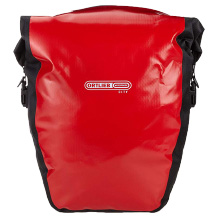




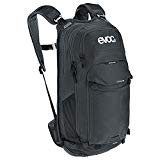
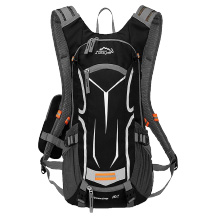
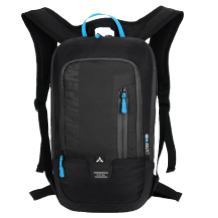

 1,039 reviews
1,039 reviews

